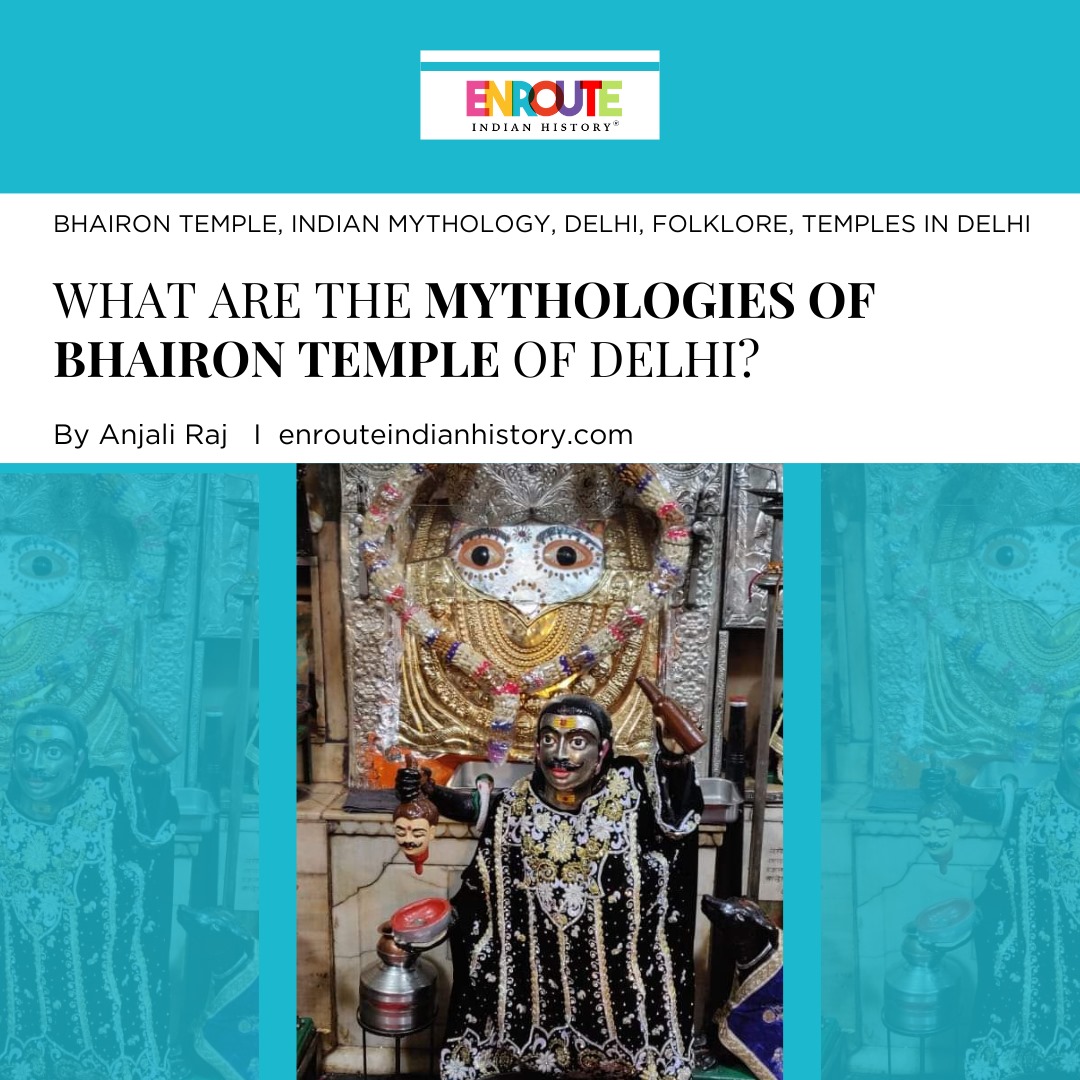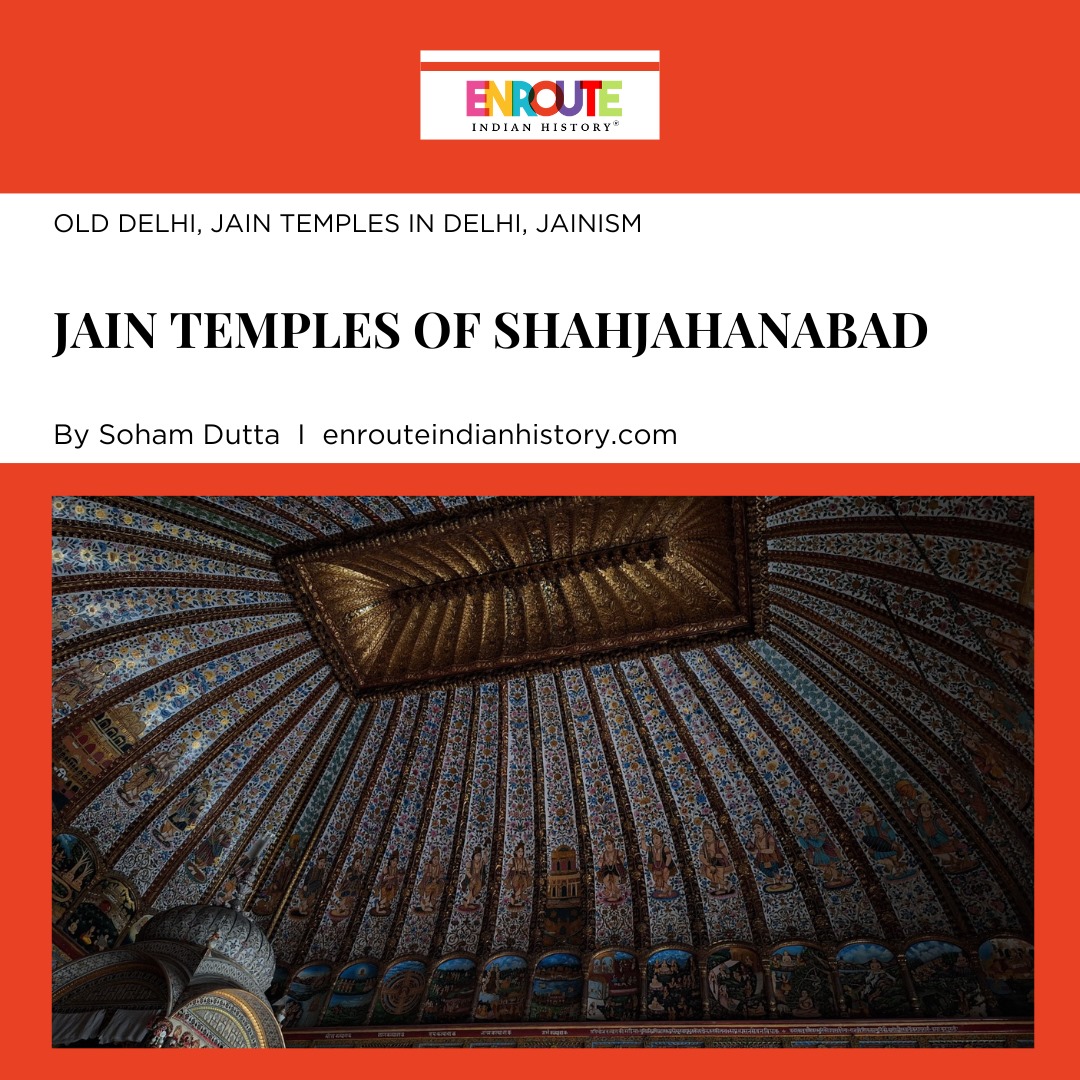
The Mughal Empire was founded in 1526 CE after Babur’s triumph over Ibrahim Lodi at the Battle of Panipat. This marked the Mughals’ takeover of Delhi, the Lodi capital. Yet, the city’s significance dwindled in the 16th century due to the shift of the Mughal capital. In the 17th century, Shah Jahan, the fifth Mughal Emperor, established Shahjahanabad and returned to the region, rejuvenating its importance. Over the course of Mughal history, many prominent architectural sites emerged in Delhi. These also included Baghs (Persian for garden) stylized in various forms including the famous Mughal Char-Baghs style (“four-part garden”).
Mughal women have made significant cultural contributions and were actively involved in the construction of monuments and gardens (Baghs) as well. These gardens were gendered spaces, accessible only to women. Enclosed within towering walls and discreet, inconspicuous entrances, these gardens concealed their verdant sanctuaries, reserved exclusively for women. Referred to as ‘purdah’ (veil) or ‘zenana’ baghs.
One such garden was the Roshanara Bagh in Delhi constructed by Roshanara Begum, she was Shah Jahan’s second daughter, a woman of notable political insight and an accomplished poet. Between 1658 CE and 1666 CE, Princess Roshanara Begum rose to prominence and established herself as a formidable force in Mughal history. In contrast to her sister and against her father’s wishes, she aligned herself with Aurangzeb in the struggle for the throne, favoring him over Shah Jahan’s Heir, Dara Shikoh. She was also granted the right to issue Nishans (mandate issued by queens, princes and nobles). This exceptional privilege was allowed only to those who held a high rank in the imperial harem.
In “City of Djinns,” Dalrymple recounts tensions between Roshanara and Aurangzeb due to rumors of her affairs. She wielded power from behind curtains, amassing wealth while he disapproved. Thus, Stripped of power, she was banished from court to her own garden palace, where Aurangzeb arranged her discreet poisoning.
Roshanara Bagh was situated to the north of the city wall. Roshanara led a secluded life within its confines until her passing in 1671 CE, at which point she was interred within the marble baradari(Mughal pavilion with pillars), encircled by a shallow pool. The adjacent galleries with level roofs feature pointed arches upheld by rounded baluster columns, a feature typically reserved for imperial use during Shah Jahan’s era. Curiously her unadorned memorial remains uncovered, symbolizing her humble status as a devoted servant of God. The structure endures to this day, though it is characterized by fading paintings and peeling plaster. The garden has a raised canal with flowering plants on both sides.
In 1917, a cricket pavilion and field were established within this location, resulting in the division of the garden into two sections under British administration. The site was christened after the deputy commissioner, H.C. Baden, by the Delhi municipality. The advent of the Roshanara Club during the colonial era brought about significant changes to Roshanara Bagh, altering its appearance far from its original Mughal garden form and furthering its presence in the history of Delhi. Presently, it has gained renown as the Roshanara Cricket Club.
Another Prominent Graden was the “Begum Ka Bagh” built by Jahanara Begum, who is a prominent figure in Mughal history. She was skilled in reading, poetry, and painting, and took the royal seal at 17 after Mumtaz Mahal’s death. Despite her father’s many wives, she became the Mughal Empire’s Padshah Begum. Jahanara wielded political power as the era’s most influential Mughal woman. She supported Dara Shikoh’s claim, cared for Shah Jahan during his confinement. And later, reconciled with Aurangzeb as “Empress of Princesses,” replacing Roshanara Begum as the court’s leading lady.
Begum Ka Bagh, was originally constructed in Chandni Chowk in 1650 CE, exclusively designated for royal and noblewomen’s use. This enclosed area featured fountains, pools, chhatris (dome-shaped pavilions), and a diverse array of trees complete with swings. The garden hosted festivities like the Pankhonka Mela, showcasing games, poetry readings, and craft exhibitions for the mughal women. A tale involving a male poet donning a burqa to recite a poem and receiving Jahanara’s reward became intertwined with the festival’s history in this garden. Travelers Manucci and Bernier spoke highly of the garden’s galleries, and canals, considering them among the city’s most exquisite features.
Unfortunately, these structures were dismantled during the revolt of 1857. The garden was renamed Queen’s Garden and accommodated a statue of Queen Victoria, which later gave way to a statue of Mahatma Gandhi, resulting in its relabeling as Mahatma Gandhi Maidan.
During the time of the Late Mughals, among the most important Mughal women was Qudsiya Begum. In 1748 CE Ahmad Shah came to the throne. The influence wielded by his mother, Udham Bai, also known as Qudsiya Begum, was considerable. She was notably active in contributing to architecture, with her most renowned creation being the Qudsiya Bagh, a palace and garden complex commissioned around 1748 CE.
Situated just north of Delhi’s walled city, this garden encompassed a substantial dwelling overlooking the Yamuna River. Although the mansion has since been lost, engravings from the late eighteenth century showcase its riverside facade, revealing its grandeur and size. The mansion, a sizable two-story structure, featured polygonal turrets at its ends. The facade was distinguished by projecting oriel windows crowned with sloping Bangala-style roofs, indicating the continued usage of this roof style in secular architecture. Presently, only an entrance gate and a mosque constructed from stucco-covered brick remain.
The severe damage to the Qudsia Bagh complex occurred in 1857, however, its decay began prior to 1857 as is evident from its representation in ‘the Delhi Book’ of Thomas Metcalfe. The picturesque view of the palace from the riverside has been a frequent subject of depiction in the Company paintings which record various aspects of history of Delhi.
In the tapestry of Mughal history, the roles of women, particularly royal women, emerge as vibrant threads interwoven with the fabric of art, architecture, and literature. Their enduring legacy stands as a testament to their patronage of creativity and cultural advancement. In the heart of modern-day Delhi, these gardens bear witness to the influence wielded by these accomplished women. These gardens provided women with a unique and gendered space within Mughal society. Through the creation and stewardship of these gardens (Baghs), Mughal women forged a space where their influence, creativity, and aspirations could flourish, contributing to a rich and nuanced historical narrative that continues to inspire and intrigue us today.
REFERENCES:
- Asher, Catherine B. (1992). Architecture of Mughal India. Cambridge University Press.
- Dalrymple, William: “City Of Djinns: A Year In Delhi”, Page 198, 1993. Harper Collins, London
- Nath, Renuka (1990). Notable Mughal and Hindu Women in the 16th and 17 Centuries A.D. New Delhi: Inter-India Publications. p. 129. ISBN 81-210-0241-9.
- Singh Vist, Mahendra “HERITAGE OF ROSHANARA BAGH” Journal de Brahmavart ISSN-2394-6326 DIO: 10.13140/RG.2.2.21086.51526 (47)
- Safvi, Rana. New dynasties, new capital cities. Volume I, Perspectives – A Peer-Reviewed, Bilingual, Interdisciplinary E-Journal. Janki Devi Memorial College, University of Delhi.
- Spear, Thomas George Percival; Narayani Gupta. The Delhi Omnibus. Edited by R.E. Frykenberg. New Delhi: Oxford University Press, 2002.
- Stephen, Carr. Archaeology and Monumental Remains of Delhi. Ludhiana: Mission Press, 1876.
- Sinha, Amita. (2022). Purdah Baghs in Old Delhi Gendered Spaces in the Public Realm.

























